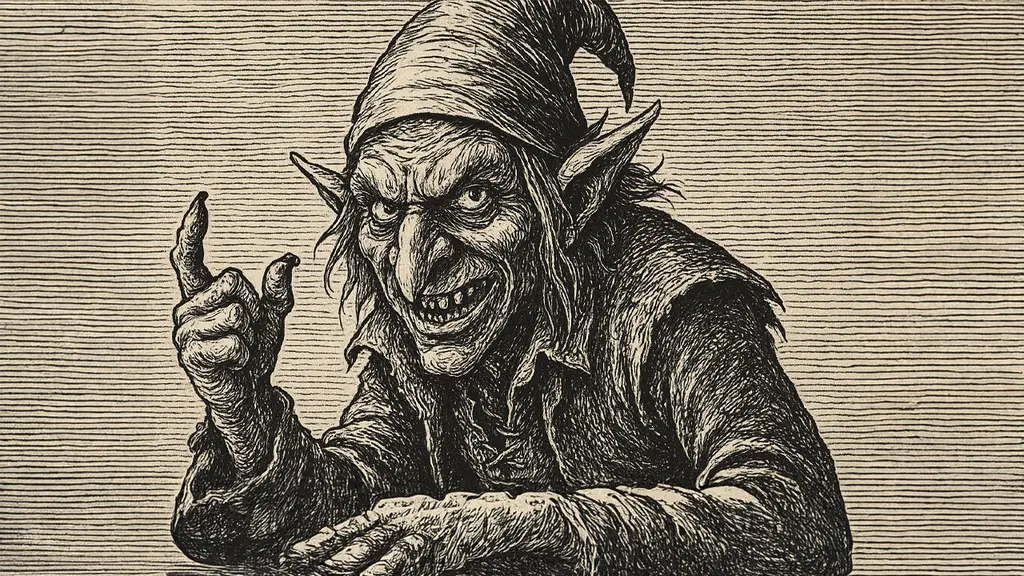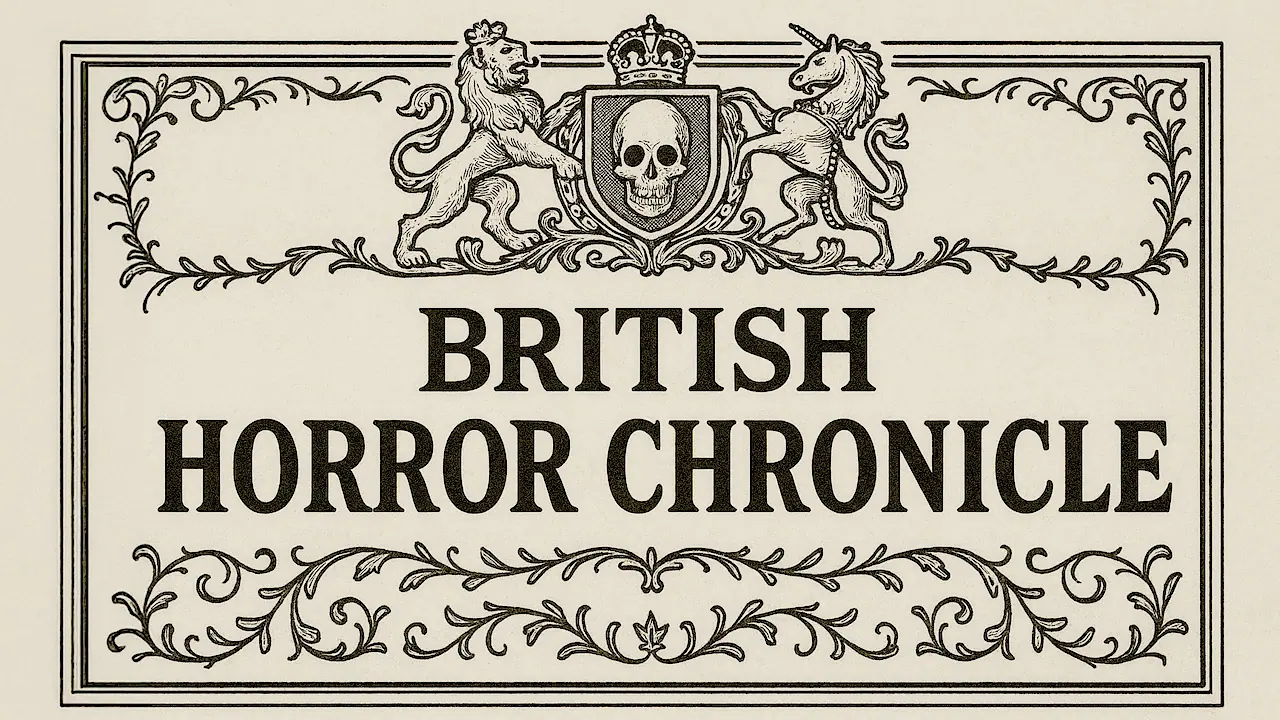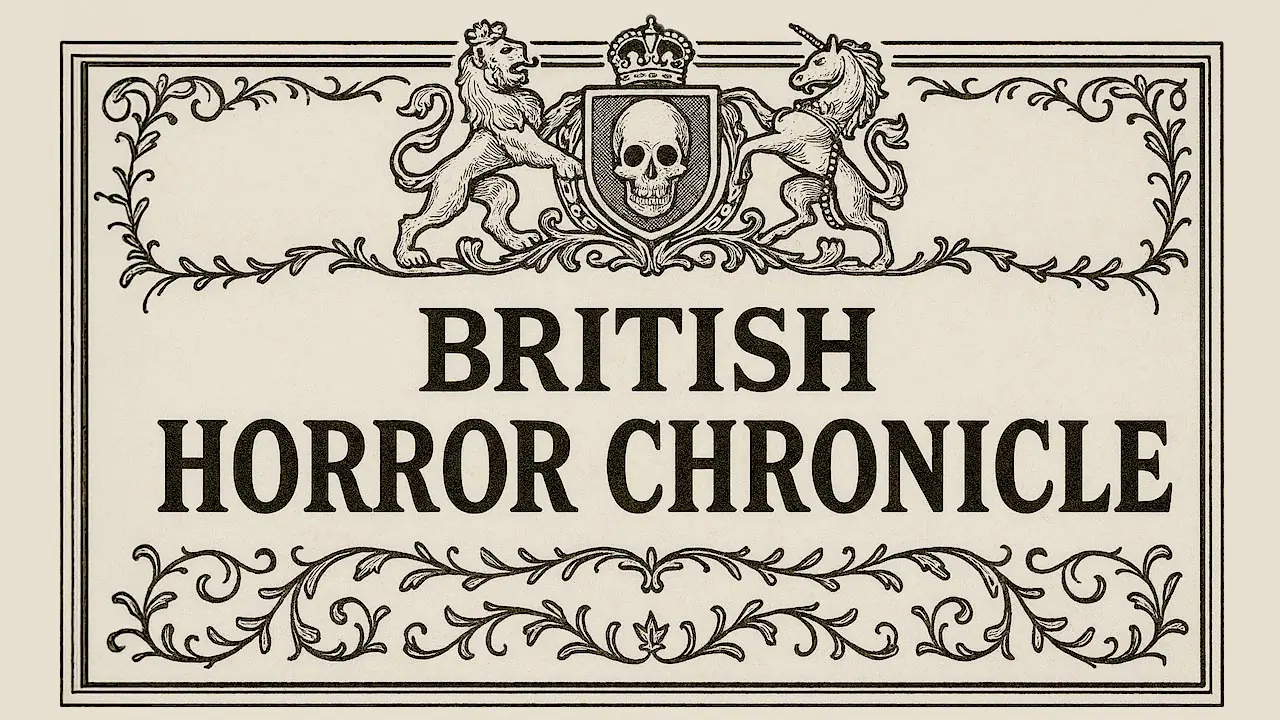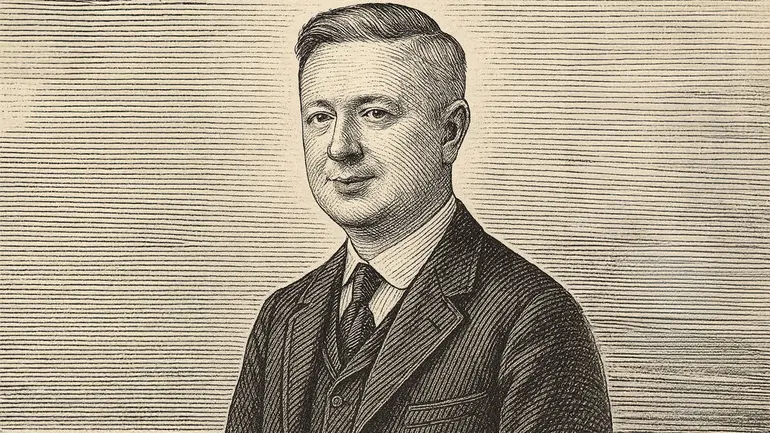In this instalment of Mr Lawrie Brewster’s British Horror Filmmaker Profile series, we cast a flickering lantern’s light upon one of the more dynamic and dashing voices of our time in horror cinema: the unflinching and effervescent Mr Andy Edwards.
At its marrow, the British horror scene is a theatre of independent spirit. It is sculpted by those brave artistes who write, direct, perform, and produce their own phantasms, frequently with limited funds but limitless fervour. For too long, such creators have laboured without the acclaim or visibility so richly deserved. These, dear reader, are individuals who, against tides of indifference, strive to keep the tradition of British independent cinema alive.
Far too often, the limelight is seized by ephemeral viral novelties or that which has been branded the next great sensation by the more corporate organs of entertainment. To speak plainly, such machines do not often cast their gaze upon the grassroots creatives toiling away in the shadows. I owe them thanks on occasion for platforming my work, but we cannot depend upon their whims alone.
Hence, this series stands proudly to champion those who dare to tread their own path and continue the gallant charge of independent British horror. Mr Andy Edwards is assuredly among their number.
Introducing Mr Andy Edwards: Indie Horror’s Brian De Palma!
Permit me, therefore, to make your acquaintance with Mr Edwards.
He has carved a singular niche in our nation’s genre cinema and shares, with this humble correspondent, the singular joy of being a plump gentleman of middle years. Indeed, there are joys to be had in one’s forties, not least in the possession of sharp humour, dazzling shirts, and stories steeped in psychological disquiet. Mr Edwards has become known for marrying horror to humour, and lending his pictures a frisson of that naughtiness best kept after the watershed.
A man of many talents, he writes, directs and produces with singular vision. His cinematographic stylings bear shades of Mr Brian De Palma’s legacy, evoking the charged atmosphere of Dressed to Kill and Body Double. One might detect in his work the same sensuality present in his striking and artful photography. Your correspondent once auditioned for a part, and did not receive it. The wound still stings.
Mr Edwards’ films are rich in colour and sleaze, favouring lurid magentas, icy blues, and settings replete with middle-class characters teetering on the edge of ruin. Not unlike my own misadventures in Blackpool.
A Zombie Holiday and a Puppet of Terror
His first horror feature was the zombified holiday romp Ibiza Undead (2016), released for American audiences as Zombie Spring Breakers. It made its debut at the celebrated FrightFest Film Festival in London and featured Miss Cara Theobold (Downton Abbey), Miss Emily Atack (The Inbetweeners), and Mr Matt King (Peep Show). The result was a delightfully sardonic twist on the undead, drenched in sun and satire.
His subsequent effort Punch (2022) delved into more sinister fare. Reimagining the traditional seaside puppet figure Mr Punch as a slasher villain, the film explored the seedy entrails of coastal British life. I jest about Blackpool, but the truth beneath such jests is often grim. Punch reveals what lies beneath the faded bunting.
From Grim to Grim Fairy Tales
If Punch was contemporary and crude, then Rumpelstiltskin (2023) is its baroque and brutal cousin. A slasher cloaked in fairy tale garb, the film plunges into the rich mire of folklore, delivering a gory and unflinching reinterpretation. Set in a medieval world crafted with startling authenticity, it is no small feat to have realised such a picture within the modest means of the British indie scene.
And yet, Mr Edwards achieved it.

Anthologies and Exploitation Excellence
Beyond his features, Mr Edwards has penned and directed segments for a variety of horror anthologies. These include Three’s A Shroud (2012), Blaze of Gory (2016), and Grindsploitation (2016), the latter under the auspices of Troma Entertainment, that beloved bastion of trash cinema, purveyor of such outrages as The Toxic Avenger.
He has also indulged in the more sultry end of psychological horror. Graphic Desires (2022) features the magnetic Miss May Kelly and offers a provocative glimpse into obsession and eroticism. A segment in Midnight Peep Show (2022), with Mr Zach Galligan of Gremlins fame, rounds out a growing catalogue of stylish, smart and unashamedly genre fare.
In our next chapter, we shall delve into Mr Edwards’ musings on folklore, cinematographic expression, and his trials upon the battleground of British independent filmmaking.
Mr. Andy Edwards: The Stalwart Artisan of Indie Horror, and His Meditations on Rumpelstiltskin
Mr. Andy Edwards is also the founder of Paranoid Android Films, an enterprising production house based in London, through which he continues to develop, produce and direct horror features. At times, these works are forged in partnership with modern distributors (for which Mr. Edwards deserves a medal), though many are wrought independently by his own hand. His creative endeavours frequently see collaboration with the likes of Mr. Jake West, known for the cult classic Razor Blade Smile (1998), and Mr. Airell Anthony Hayles, producer of They’re Outside (2020) and Advent (2024).
In short, Mr. Andy Edwards is not merely a filmmaker of merit. He is a survivor. One of the few remaining who dares to navigate the commercial whirlpools of the independent market with charm, humour, and that most elusive of traits: creative grit. His pictures consistently combine personal vision with audience appeal, and this quality renders him a figure worthy of our attention, admiration, and perhaps even the raising of a celebratory glass.
An Exchange of Questions with Mr. Edwards

Lawrie Brewster: Mr. Edwards, your motion picture Rumpelstiltskin is a finely wrought fantasy slasher of dark design. I was most impressed by its mischievous treatment of the classic fable, and might well award it four stars for its vigorous subversion of expectation.
As you are aware, distributors have lately sought to exploit the recent public domain status of beloved characters such as Winnie the Pooh, with no less than five Popeye horrors reportedly in production. Though Rumpelstiltskin resides on the fringe of this trend, your film exhibits an intelligence and sophistication that sets it far above its contemporaries.
Might I ask what challenges arose when attempting to balance artistic vision with the commercial sensibilities demanded by the marketplace and the modern distributor?
Andy Edwards: First of all, thank you for the kind words. If ever I require a man to introduce me on stage at festivals, I now know whom to call.
Rumpelstiltskin was indeed an attempt to satisfy both artistic longing and commercial practicality. As a storyteller, I am driven by the desire to craft original tales. But donning my producer’s cap, I must look to the market. I have seen the potential of public domain horror first-hand, having directed Cinderella’s Revenge, starring Miss Natasha Henstridge. I am also on good terms with the team behind Winnie the Pooh: Blood and Honey.
So I sought a character not yet done to death, one I could transform through my own lens. Rather than desecrating Disney, I saw an opportunity to reclaim Grimm folklore for the eerie and violent tradition from which it sprang.
The tale of Rumpelstiltskin, which I once read to my young son (albeit with concern regarding its baby-snatching plot), seemed ripe for revival. The last major adaptation came in the mid-90s and involved the creature in modern-day Los Angeles, which I wished to avoid. Instead, I opted for a medieval folk horror rendition, a rather masochistic pursuit for one with a modest British budget, but such is my nature, and my therapist knows the rest.
Lawrie Brewster: I sympathise entirely. Following the production of The Reign of Queen Ginnarra, I required a week of silence and a stiff bottle of spirits.
Could you share some of the difficulties you encountered in portraying such a richly historical setting?
Andy Edwards: Only a fellow sufferer could truly understand the pain. In a medieval picture, one cannot simply raid Primark for costumes or book a flat on Airbnb. Every item must be sourced, crafted or hired. Our sets were centuries old, and carried with them not only dust and preservation rules but ghosts. Our leading lady had a spectral encounter at Anne of Cleves’ house.
Advice to budding filmmakers often suggests using what is already available. I did the opposite. We had castles, horses, children, prosthetics, the full package. It was a monumental undertaking, but the rewards, I hope, are clear on screen. My sincere thanks to Miss Rebecca J Matthews and the entire crew for joining me in this folly without ever once uttering the words “it cannot be done.”
Lawrie Brewster: Your films, and indeed your photography, exhibit a singularly stylish and sensual approach to visuals, one seldom found in independent horror. While your previous works channel a Brian De Palma-esque flare, Rumpelstiltskin feels more akin to A24’s arthouse palette. Your scenes in the throne room particularly stand out.
Might you elaborate on your cinematographic philosophy and your work alongside Mr. Dom Hopking?
Andy Edwards: I greatly appreciate that. Visual style is paramount. There is no longer an excuse for ugly films, even on a shoestring budget. Advances in digital technology and lighting have given us tools that once required a studio’s resources.
In the past, a dreary green or blue wash seemed to infest horror. I rebelled with bold colours, influenced by the likes of De Palma and Argento.
Rumpelstiltskin required a different touch. It called for realism, with only daylight, moonlight, and firelight at our disposal. There was little place for neon here. We sought inspiration from Mr. Robert Eggers and various European art-house stylists. Nearly all fire in the film is real flame. Barry Lyndon gave us courage and also a few fire hazards.
Lawrie Brewster: Following Punch, which introduced us to a memorable and oddly charming seaside menace, you have once more gifted us a fiendish yet compelling villain with Rumpelstiltskin. As both producer and director, what were your priorities in sculpting this character, from design to performance?
Andy Edwards: With a creature like Rumpelstiltskin, the usual low-budget approach is to keep him off-screen for as long as possible. But in our case, he is not simply a monster. He is a central figure with dialogue, presence, and personality. That meant no cheap mask, and certainly no reliance on digital trickery. We went with full prosthetics.
The look was developed with special effects legend Mr. Dan Martin, whose work includes Possessor, Infinity Pool, and Lords of Chaos. We then continued the process with Will Harvey, who executed the prosthetics, while James Dance created the costume. Joss Carter, who plays Rumpel, became an essential part of the collaboration. We wanted a character who was believable from the moment he appeared, one who could evoke fear, amusement, and even, at times, a shred of sympathy. Joss delivered marvellously.
Lawrie Brewster: Let us speak now of Miss Hannah Baxter-Eve. She undergoes quite the ordeal in Rumpelstiltskin. How did you discover her, and what drew you to cast her in such a demanding role?
Andy Edwards: Once we had our goblin, we needed our heroine. Evalina is in nearly every scene. She begins as a humble peasant and must transform into a regal mother willing to defy evil. Hannah and I crossed paths briefly at a screening, and she had the good sense to follow up when she learned of our casting. She sent a self-tape, made the shortlist, and then read opposite Joss in live auditions. Chemistry is crucial. And stamina. You need someone who can work in a cold forest at three in the morning on four hours of sleep. That was Hannah. Graceful, capable, and game for everything we threw at her. She never complained, or at least, never where I could hear it.
Lawrie Brewster: As fellow independent filmmakers, we have swapped many tales of trial and triumph. What is your view on the current state of the indie film market? And do you have any advice for new entrants hoping to avoid some of its more treacherous pitfalls?
Andy Edwards: Ah yes, this is the point where we usually cry into our pints. The market is, to put it mildly, fraught. The tools are more accessible than ever, and talented young filmmakers abound. But once the film is finished, the trouble begins. Distribution is a minefield. There are bad deals, missed payments, and a general sense of instability. The sharks smell blood. And I have the bite marks to prove it.
Too many newcomers fail to think about the audience. I recently asked a young director who their audience was, and they said, “everyone.” That is another way of saying no one. Know your market. Know who pays to see your work. Serve them first. If the film crosses over, all the better. But even Marvel has a core it caters to.
Lawrie Brewster: Do you see Punch and Rumpelstiltskin as cultural commentaries beneath their grisly exteriors?
Andy Edwards: Punch was filmed in a forgotten seaside town, and its titular villain feels like a product of that decline. Mr. Punch has always been satirical. He was a puppet of politicians before he terrified children. So yes, there is commentary there.
Rumpelstiltskin exists in a fantastical world, but it is ruled by the same types of tyrants and zealots who populate our reality. Genre film is a wonderful vehicle for these ideas. You can say what you like without sermonising, and you won’t bore your audience in the process.
Lawrie Brewster: My work has long been inspired by the likes of Kurosawa and Ken Russell. Have any filmmakers shaped your artistic vision in a similar way?
Andy Edwards: I can see their influence in your work, truly. As for me, David Lynch is a towering inspiration. His refusal to compromise has always stirred me. But I would not call my work Lynchian. That mantle is heavy.
In my youth, Sam Raimi and Peter Jackson were revelations. Their DIY horror masterpieces showed that filmmaking was not only for Hollywood. They made it feel possible. Now here I am, decades later, still in the woods, still splashing blood around. Hoping someone offers me a Marvel gig any day now.
Stylistically, my influences shift with each project. Punch was described as “Ken Loach’s Halloween,” while Graphic Desires earned the label “Charlie Brooker meets Verhoeven.” I accepted both compliments gladly.
As a producer, I find inspiration in the likes of Roger Corman and Jason Blum — men who back bold ideas with modest budgets. I recently produced Custom, an erotic horror feature by first-timer Tiago Teixeira. Cronenberg would be proud. The film has completed its festival run and should be available for general fright and delight later this year.
About Mr. Andy Edwards
Andy Edwards is a British filmmaker of rare wit and irreverence. With a knack for blending horror with humour, and chaos with charm, his work has made waves across the independent scene. From Ibiza Undead to Rumpelstiltskin, his filmography is marked by bold ideas and a commitment to originality. Whether shocking, laughing or bleeding, his stories have earned him admirers near and far.
You may investigate his latest exploits at:
- Website: www.paranoidandroidfilms.com
- Instagram: @paranoid_android_films & @andyedwardsfilmmaker
- Facebook: facebook.com/ParanoidAndroidFilms
- Twitter/X: @paranoid_films & @eds209
- YouTube: Paranoid Android Films on YouTube
- Bluesky: @pafilms.bsky.social & @eds209.bsky.social
- TikTok: @paranoidandroidfilms
About Mr. Lawrie Brewster
Mr. Lawrie Brewster is a Scottish horror film producer with over fifteen years of experience. He presides over Hex Studios, stands as President of Amicus Productions, and leads the British Horror Studio — an initiative dedicated to creating a new golden age of British horror.
Discover more at his official website: www.lawriebrewster.com
Mr. Brewster’s recent writings include:
- Where to View The Slave and the Sorcerer, A Fantasy of Sorcery, and Sinister Delights
- Independent Horror Must Adapt or Perish
- Mr. Lawrie Brewster Unveils Queen Ginnarra, A Gothic Allegory of Heretical Faith and Madness
- How Mr. Lawrie Brewster Defied the Odds and Built a Gothic Empire
- Staff Directory of the British Horror Chronicle
For those of modern taste and forward inclination, a contemporary rendering of this article may be found at Amicus Horror, replete with present-day British musings.


